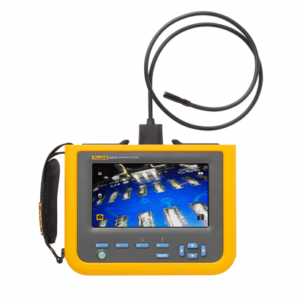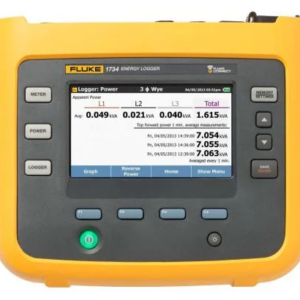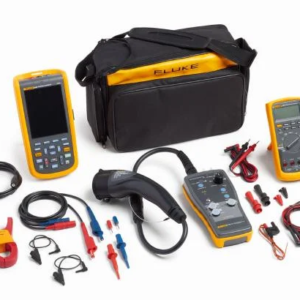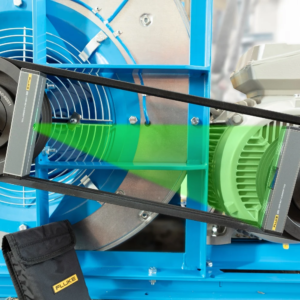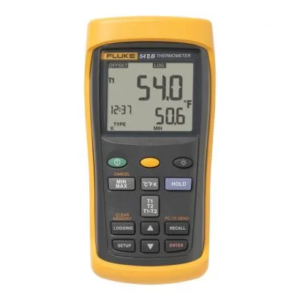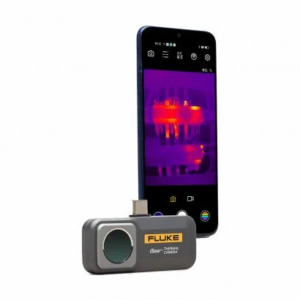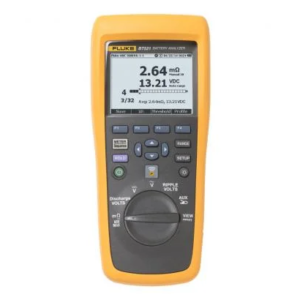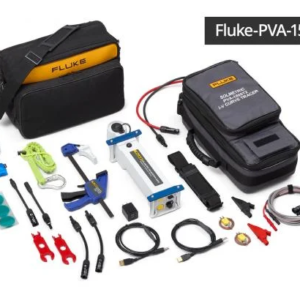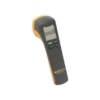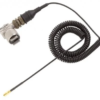Fluke 805FC Vibration Meter
What makes the Fluke 805 the most reliable vibration screening device available?
• Innovative sensor design minimizes measurement variations caused by device angle or contact pressure
• Consistent data quality at both low and high frequency ranges
• Four-level severity scale assesses urgency of problems for overall vibration and bearing condition
• Exportable data via USB
• Trending in Microsoft® Excel using built-in templates
• Overall vibration measurement (10 Hz to 1,000 Hz) for acceleration, velocity and displacement units of measurement for a wide variety of machines
• Crest Factor+ technology provides reliable bearing assessment using direct sensor tip measurements between 4,000 Hz and 20,000 Hz
• Colored lighting system (green, red) and on-screen comments indicate how much pressure needs to be applied to take measurements
• Temperature measurement with Spot IR Sensor increases diagnostic capabilities
• On-board memory holds and saves up to 3,500 measurements
• Audio output for listening to bearing tones directly
• External accelerometer support for hard to reach locations
• Flashlight for viewing measurement locations in dark areas
• Large screen with high resolution for easy navigation and viewing
What is Crest Factor +?
Fluke 805 with Crest Factor + takes the confusion out of bearing assessment The original Crest Factor is used by vibration analysts
to identify bearing faults. It is defined as the ratio of the peak value/RMS value of a time domain vibration signal.
A key limitation of using Crest Factor to identify bearing faults is that the Crest Factor does not increase linearly as the bearing degrades. In fact, the Crest Factor can actually decrease as a bearing nears catastrophic failure due to large RMS values.
In order to overcome this limitation, Fluke uses a proprietary algorithm known as Crest Factor +(CF+). CF+ values range from 1 to 16. As the bearing condition worsens, the CF+ value increases. To keep things simple, Fluke has also included a four-level severity scale that identifies the bearing health as Good, Satisfactory, Unsatisfactory or Unacceptable.
Exporting and Trending with the 805
Export and Trend in Excel
Trending, or repeated vibration measurements kept in a spreadsheet over time, is the best method to track machine health. With 805 you can easily:
• Export your result to Excel through USB connection
• Trend the readings with the pre-built Excel templates and plot graphs
• Compare the overall vibration readings to ISO Standards (10816-1, 10816-3, 10816-7)
Import measurements from the 805 Vibration Meter to an Excel template on your PC in order to trend the bearing parameters: overall vibration, CF+, and temperature. Looking at just the number alone for the overall vibration or temperature might not be of much
benefit to the operator or technician if they don’t know what the number means. The user may not know what is normal or what indicates a problem.
If measurements taken on the operator rounds are easily loaded into Excel, then the trend will show patterns of something that is becoming abnormal. The user can now see a clear picture of the changing bearing condition and deteriorating health of the machine.

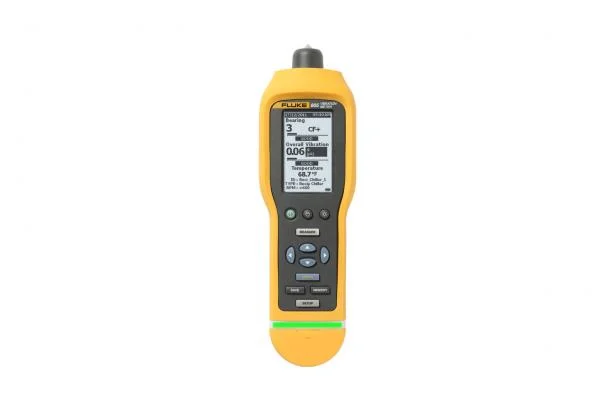
 fluke-805-vaibration-meter-datasheet
fluke-805-vaibration-meter-datasheet
